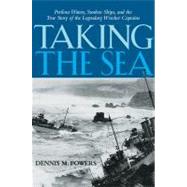
Note: Supplemental materials are not guaranteed with Rental or Used book purchases.
Purchase Benefits
What is included with this book?
DENNIS M. POWERS (Ashland, OR) is the author of six books including the acclaimed maritime histories Sentinel of the Seas and Treasure Ship.
| Early Years | p. 1 |
| The Wrecker Chronicles | p. 15 |
| San Francisco Bay Times | p. 35 |
| The Tragedy of Merritt's Circassian | p. 51 |
| Dynamite Johnny and the Umatilla | p. 75 |
| Midwest and Coastal Operations | p. 97 |
| Success, Sealing, and the Arctic | p. 121 |
| Failures Follow Accomplishment | p. 147 |
| Wrecks - and a Ghost Ship | p. 163 |
| No Rewards Without Risk | p. 181 |
| Used Parts, Scrap, and a New Bow | p. 201 |
| The Decade of the Great War | p. 221 |
| The Roaring Twenties | p. 247 |
| The Change of Eras | p. 269 |
| Selected Bibliography | p. 285 |
| Index | p. 297 |
| Table of Contents provided by Blackwell. All Rights Reserved. |
The New copy of this book will include any supplemental materials advertised. Please check the title of the book to determine if it should include any access cards, study guides, lab manuals, CDs, etc.
The Used, Rental and eBook copies of this book are not guaranteed to include any supplemental materials. Typically, only the book itself is included. This is true even if the title states it includes any access cards, study guides, lab manuals, CDs, etc.